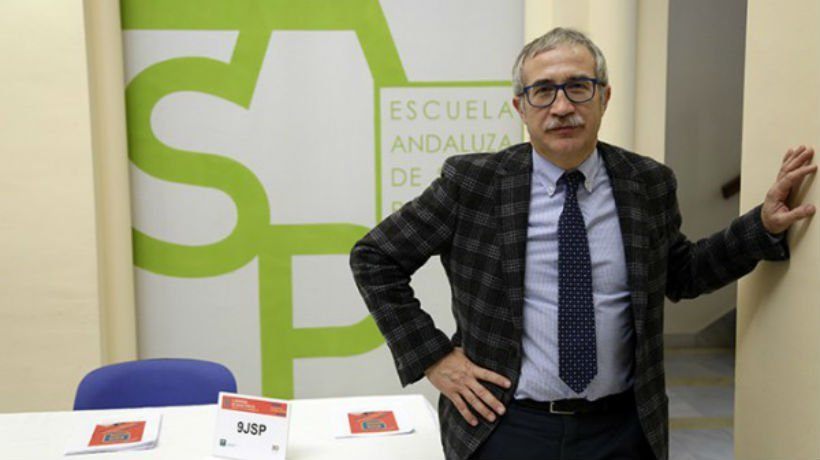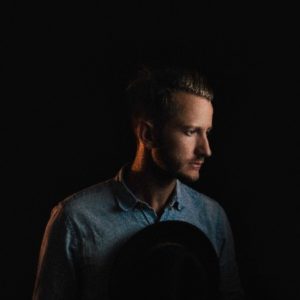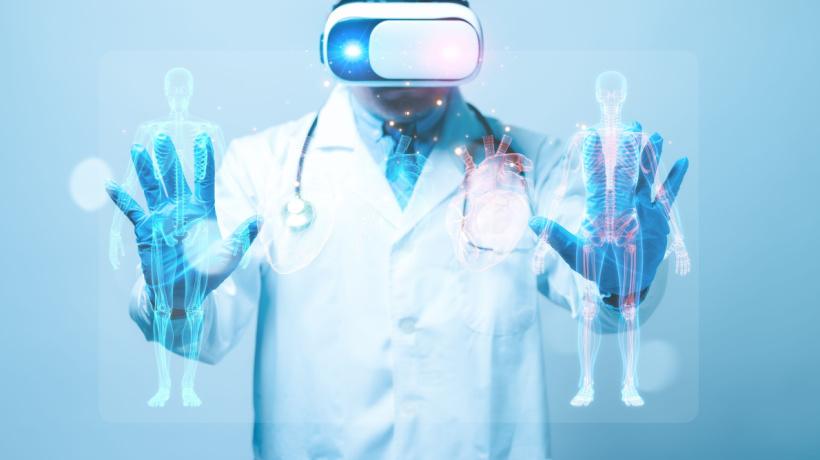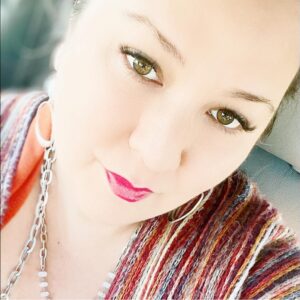The Patient School Project: Training, Information, And Emotional Support Among Patients
Prior to the start of the First National Health Hackathon, took place the symposium on Opportunities of eHealth, participating Health, Marketing, Communication, and Health Management professionals. During the symposium, we listened to Dr. Joan Carles March on his paper Training Patients In Digital Tools and then we had an interesting talk with him, during which we expanded the information about his project Patient School. This is the result:
The Patient School Project
“The Patient School is a Spanish and Latin American project by the Ministry of Health of Andalusia. Basically, we work mainly with patients. We work with professional staff too, but patients are the center of our work; with professionals we get both worlds together.
”To address the issue of patients and the relationship with them, I like to talk about a triad: Training, information, and I would add emotional support. Our approach is normally linked to a classroom activity in which workshops with patients, professionals, or both, take place, and where other patients are trained: It is training between patients. This is usually done in spaces like health centers, hospitals, or UMI units.
”We work on many chronic diseases. We have different spaces and different aspects: We have a 2.0 patients’ school where I have worked more, thinking of committed people who search the internet, seek forums, blogs... What is our approach? One that is not based on using a single channel, but many of them.
”From there, we saw that it was necessary to incorporate new technologies to such training. Why? Because education takes place in a specific moment in which you go to a workshop and get access to a training course. So what is the element that can give continuity? Something more technological.”
Technology Applied To Training
”The technology is used in several ways:
1. Between trainers and patients going to a workshop.
There, patients are connecting with trainers through a virtual classroom where they talk about themselves, things they value, how they are doing; both personally and in the process of training.
2. Among patients.
Patients use WhatsApp and ask for ‘advice’; it is mostly WhatsApp, and sometimes a phone call.
3. Use of social platforms.
The idea could move toward using more global tools in the Patient School, where formally we are 10,000, but in reality we have reached more than 20,000 people. We are 19,600 on Twitter –we are the second institution in Spain after the Ministry of Health in the field of health with the most Twitter followers–, more than 3,000,000 people have viewed the videos on our YouTube channel, we have over 1,000 daily interactions in our Facebook page, we do some monthly video chats between patients and professionals... So we said ‘There must be a space of continuity’. We created a blogosphere for patients about different topics, where patients and professionals write. Basically, the idea is to have a space in which someone can write their story and say what goes on with them; a space of continuity.”
Channels Used
“We are working on improving the platform for patients, and we will have it finished before the end of 2016. But what are we doing? A plethora of channels; a head channel and then many channels. In that sense, we have a star of various channels, though with no doubt we focus on a face-to-face channel. In 2015 we planned 242 direct workshops with a face-to-face interaction between patients. But what channels do we use?
1. Blogs.
Patients, when they write, get better. We also have blogs with prescriptions. Every Friday, there is a post with food recipes. People look for lifestyles topics; therefore, this is a key element. And since April 2016, we are “blog friends” with blogs of patients and magazine blogs such as the Health Gazette. Therefore, the element of writing, thinking, and expanding thoughts on this topic, we feel it offers a channel for people to not only report, but also write things that may help others. It is emotional support, information, and training at the same time.
2. Other Channels.
We have a newsletter that now we get on a monthly basis; we launched a newsletter on the congresses; we use the story file when we do certain acts, we have a book... Another key element: Audiovisual for testimonies, testimonies that cause goose bumps, that get people to know about others, not only through testimonies of professionals. We use aspects such as radio and congresses, and an element which I think is very important: I think there is a very big gap in the relationship with patients. So we have a channel that helps bind these worlds; we do video chats, a flagship product, a product that is based on putting a person’s bio on a blog: Sometimes it is a patient’s, sometimes it is a professional’s, a doctor’s or a nurse’s. We email the link to everyone so people know it is up there; then, people comment on the blog with questions to professionals. We put it on Twitter, we create a hashtag, we give a broadcast on Facebook and we stream it. It is a channel that can help approach others.
3. Applications (apps).
We have 2 applications right now: A liver juvenile arthritis app, and another one based on breast cancer. In one of them we are working on improving the professional / patient relationship. In our applications there are also blogs, video spaces, and other elements. In addition, we are working on other apps with the idea of training, information, and emotional support. We want these elements in our work with other diseases. The idea is that all diseases get to have an app, all workspaces get to have an app; I think that this is an important element to advance a little towards that challenge.
4. Virtual Platforms.
We are working on a virtual platform to encompass these forums. Right now, we do not have a single platform. Therefore, in some way, it would be an easy learn, that would be the key. We even do joint meetings, joint training of professionals and patients. We have a website where we have virtual classrooms, classrooms depending on the conditions. What do we lack? A virtual training platform that is an easy to learn tool and allows training and emotional support for people, with opportunities for interaction and exchange with someone on the other side, with that ‘closeness’ feel as a key element. If we have face-to-face trainers, we must work with patients who also communicate on a virtual level and probably with the support of professionals comment on that line to add information. That would be a first bet.”
The Value Proposition
”The key to our work is combining the virtual classroom with the face-to-face classroom with professionals and patients together. We work a lot on these two ways: With physical and virtual presence on the one hand, and with professionals and patients on the other. People not only live from information, they also seeks support, and for this, we rely on:
- Multitude of channels.
- Educating patients on digital tools and social networks in all our conferences.
”Our value proposition is to add; use the ‘and, not the ‘or’. We are coming from the world of the Patient school or programs for patients where they work in person or virtually; few institutions have opted for both areas.
”Here we make an important commitment to social networks, because ours is an account with many followers. Our differential keys are: Face-to-face training, virtual training, professionals. ‘Professionals’ is a key element not only because there are reference people among professionals in the classroom, the school of patients, the centers, the units, but also because there is an added element: We put some professional on a pedestal every month, when we do an interview using patient questions, and this becomes a television interview to be broadcasted on Twitter and streamed to reach many more people.
”What is the key element? That they feel that this project is useful to professionals, and from that moment it is prescribed. What is the clue? Not only that patients say that after a workshop they feel they become better people (as one says, ‘Even my wife noticed it’), but also that the professionals prescribe it because they know that this space is useful to them; they want it, they believe they can help. Even the director of the diabetes plan of Andalusia told me: ‘I want a platform there for professionals working on diabetes to be as important as the platform for patients.’ Therefore, I believe that we give that value of consistency, methodology, and rigor. That I think it gives value to the work done by the patients’ associations, which is very enviable, with its volunteerism, its relief work, which is essential, and we use it: We offer methodology, infrastructure, logistics, and professional contact. We are not just taking people from associations, but from elsewhere too, and also we support technology. And this is the good mix. I.e.: Here, it is based on adding; you, partnership, you, the patient, you, health center, you, hospital, you, professional (nurse or doctor or social worker), you, technology (Twitter, or video on YouTube, or Facebook). That sum is the key.
”I think the project is the most important in Spain from my point of view, because it has been able to add all channels: A head channel, and many other channels. At first, we started seeing who was interested; from there, we had to raise it more closely linked to associations and now we have moved on to raise it in a more formal way with clinical services and health centers. For what purpose? The idea is to reach more people: We have already reached three million people via virtual channels, and only 15 or 20,000 through remote channels. I think that, between the two of us, we will get to much more; the goal is a waterfall that reaches as many people as possible and that makes the patient the key element.
”We especially encourage training among patients. The professional is a person who can provide value-added elements to the patient from what they hear at a workshop that was brought by another patient. We do not want professionals replacing the patients, but rather complementing them, cooperating, collaborating, making it easy to work to the patient, getting other patients, and also supplementing the training that has been given by the another patient to continue on that line.
”What do we do well? We generate meeting spaces; we have created opportunities for dialogue among care staff and the patients school. What do we tell nursing people? How do we work, so they know what role they can bring. We try to bring examples of people we like the way they are performing, to say ‘That's how we like it’. What is the clue? Plain language. Talking less and letting the patient to take the reins, explaining that decisions get to be shared decisions, that the patient could provide expertise as an expert based on their experience, and I, as an expert in other things, I help the expert in their experience to do the training better and to help; themselves and others.
”The key is to ‘put the ear’, not assume that the professional will know. Understand that what the patient brings will probably be something the professional cannot provide, that a patient who has hostomia can help another patient having hostomia on how they can go to the beach, which is the most appropriate underwear, how to live a more normal life, much more than a professional; because that person lives it daily, they know what to do when they are going to the beach, which a professional can only talk in hearsay. Respect is what makes a good sum, which is an exponential process.”
Other Initiatives In Spain, Europe, And America
”There are several initiatives in Spain: In Catalonia, in the Basque Country, in Galicia… There are emerging initiatives in Asturias; there is one that is being relaunched in Castilla La Mancha; in Valencia there is something, in Baleares we will create one, in Extremadura too, in the Canary Islands too, in Madrid I think it is beginning... therefore there is interest.
”There are some in Europe too, especially in the UK, in that line of Andalusia to systematize about the prospect of imbricating it at work. That is a goal that professionals have, to do workshops with patients and between patients, and therefore to encourage them. That strategy of NHS (National Health Service) has many similar elements to what we have done, an intricate strategy day by day, in the role of daily activity, not something in addition.
”In Europe, there are associations or lobbies of powerful patients who promote a line of empowering the patient, but I think that we probably need more progress towards the triad I said: Information, training, and emotional support, which is what patients say they want and need, and therefore there is where we should move forward.
”There are also experiences in the US and there is much interest in Latin America. We have many followers in Latin America and they are telling us they want it. US also want to intervene in Latin America, but I think there is more closeness to Spain.”
Future Plans
”We also have to raise two future challenges:
1. From Spain to Tierra de Fuego.
This is a challenge co-created with Esporti revolution, where we will go 10,000 km from Spain to Tierra de Fuego. To mobilize people, if you do business as usual, there are people who follow because it is true, but there are people who pick; we do acts of contagion of emotions, injecting emotions, and every year we have spaces in a congress of patients where emotions are raw skin. However, we also believe that more can be done daily, with an activity of a challenge of walking or running or biking for 10,000 km: This is the distance between us and Tierra del Fuego in southern American Continent. This challenge you have to work on every day, not only at certain times. We are interested in getting into these challenges; we want to involve patients in challenges based on lifestyle, such as walking, running, cycling... This is the element that people look for more, and therefore we help not only with information, but also with activities.
2. The Andalusia Health challenge.
In this case the challenge is promoted by the Junta de Andalucía, somehow within an open innovation strategy, where the key is cooperation and collective intelligence to go beyond the boundaries of the organization. In that sense, we try to work on things that we want people to raise, things that help us advance through ideas that can help patients, challenges that allow us to reach the goal with prizes to encourage them. This challenge has already begun. It is a challenge with Vodafone: It is the Andalusia Health challenge, based on COPD, COPD challenge, where the goal is to help patients get better with information, training, and emotional support, and that is where the Patent School is a key element. Anyone can apply, and this idea of different channels and interesting prizes will enable progress in the health system. This is a project that believes in patients and wants to do things by and for patients. We are too patronizing to think about what they need and want. I think things have to be raised further with patients.”









